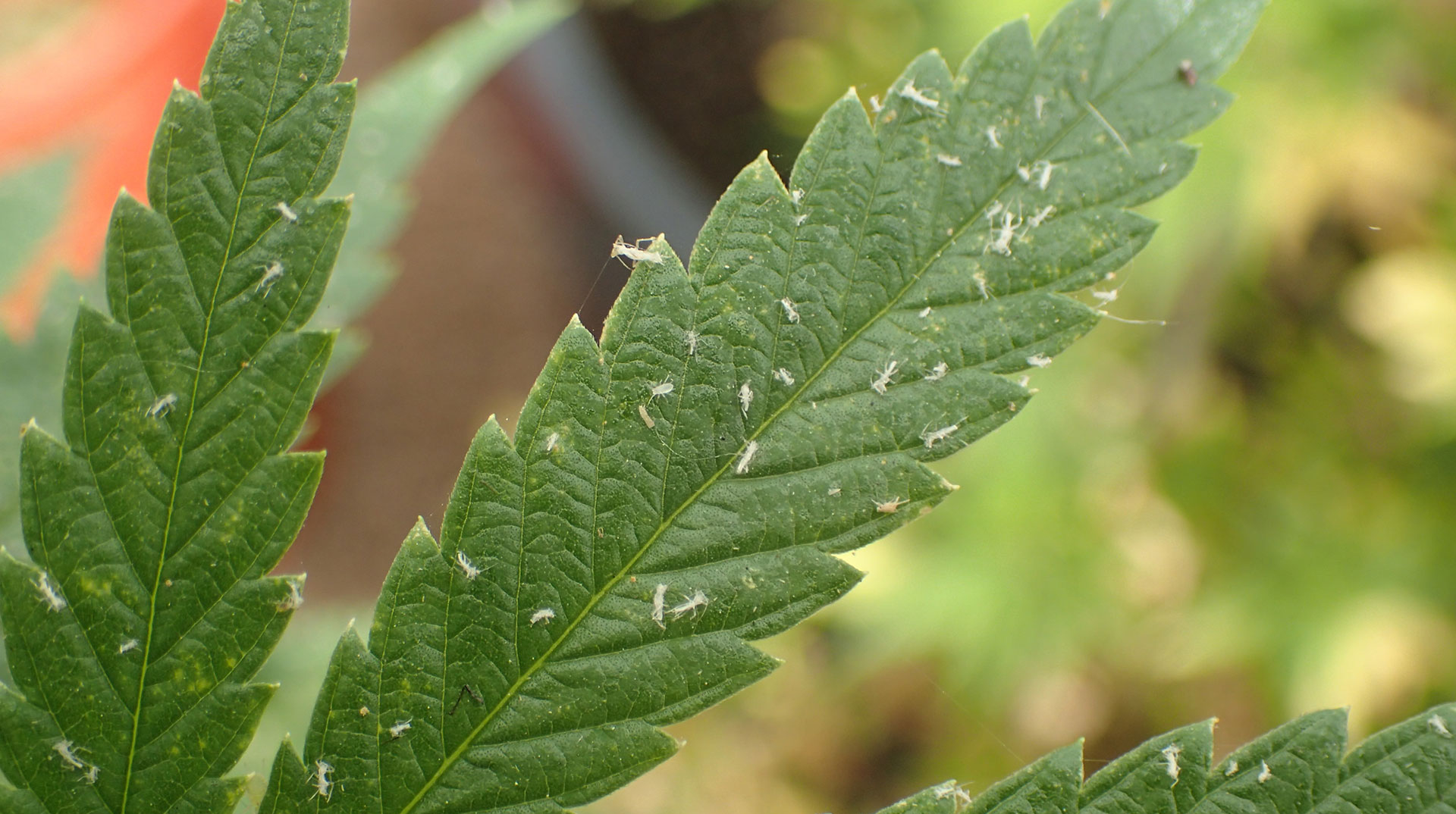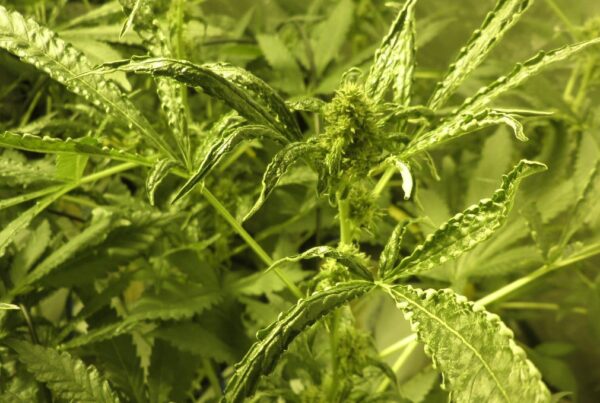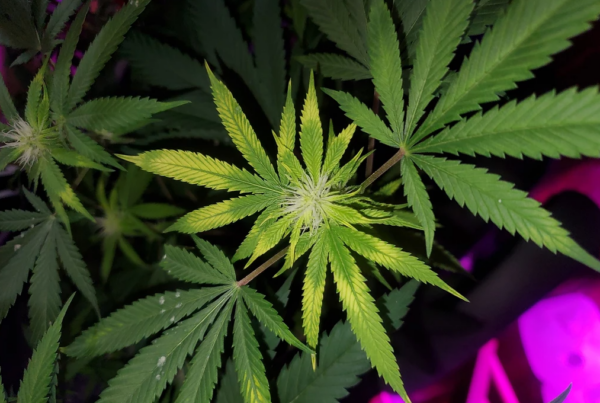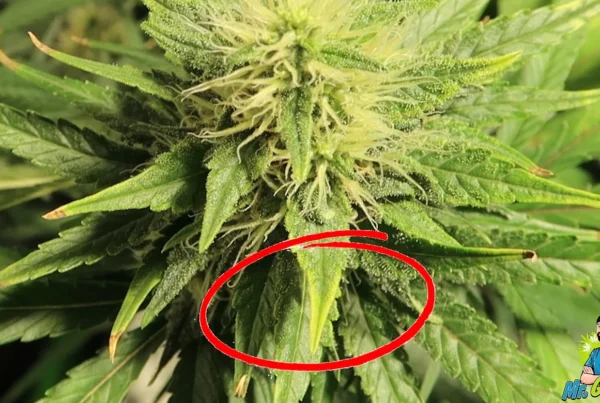One of the more annoying problems that you may come across when growing cannabis is pests. A common pest that causes destruction to your plants is aphids, also known as greenflies and blackflies. You may slightly freak out when you first see them, but do not worry, this this guide will help you identify the signs of an aphid infestation and provide you with tested-and-tried methods to get rid of these bothersome phloem insects in no time. But before you buckle up to get rid of these pests, it is crucial to understand how they impact cannabis plants.
How Do Aphids Damage Cannabis Plants?
Aphids are harmful for your cannabis plants as they are capable of doing these four things:
- They are considered pests because they puncture various parts of the plant and use their sucking mouths or proboscis to suck the sap or fluid from the plant. This loss of fluid leads to the plant wilting and stunts its growth.
- The damage does not stop here as these aphids excrete sticky ‘honeydew’ after consuming sap from the plant. This sticky liquid can cause mold to grow on the plant.
- Not only does this sticky sugar solution trigger mold or sooty fungus growth, but it also attracts other pests and insects. It can also draw ants that start protecting these aphids from other predators for the sweet liquid they produce.
- They also bring other viruses and bacteria that can affect the plant’s overall health and is also a hindrance to a good harvest.
It is important to be on the lookout for these pests and be swift in your effort to get rid of them. But how do you identify these pests?
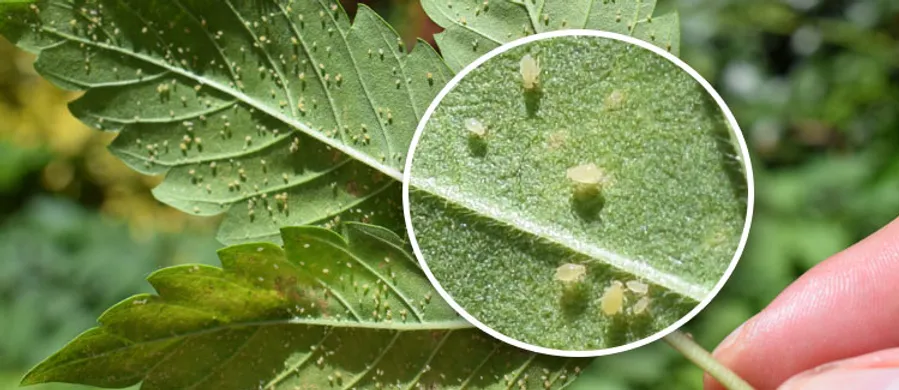
Signs of an Aphid Infestation
Aphids can look different depending on their stage of life, but adult aphids are not that hard to spot. Their bodies are pear-shaped and depending on the species, they can have different colors. Usually, they are green, black, brown, yellow, or pink and noticeable – except for the green ones. Their nymphs can be white in color and adults can also have wings. Although the winged adults do not possess the strongest wings, they are capable of using airflow to fly to other plants to infest them.
These sap-sucking insects prefer to hangout in colonies underneath the leaves or on stems. Their ability to reproduce asexually makes them a real threat as one female aphid only takes a week to mature and can give birth to 3-5 daughter aphids per day. Female aphids mate to lay eggs and produce adult males. Even though their lifecycle is complex, it can be easily understood that they can grow rapidly in numbers.
Now that you know what aphids and their nymphs look like, you just need to closely observe the plant to spot any adult aphids that can be up to 3mm in size. Besides looking for the insect, use this checklist to diagnose your plant:
- Check for cast skins or exoskeleton on the plant that the adult aphids shed upon molting
- Check for shiny honeydew droplets on the plant, particularly, on the leaves
- Check for white spots or flecks on the plant; these spots result from aphids puncturing the leaves and can be very difficult to spot
- Leaves curling or turning pale and plant wilting
These pests can be devastating for your cannabis plants; therefore, it is recommended to be proactive and take good preventative measures. If you identify that your plant is suffering from an aphid infestation using these diagnosis signs, do not worry as they can be easy to get rid of.
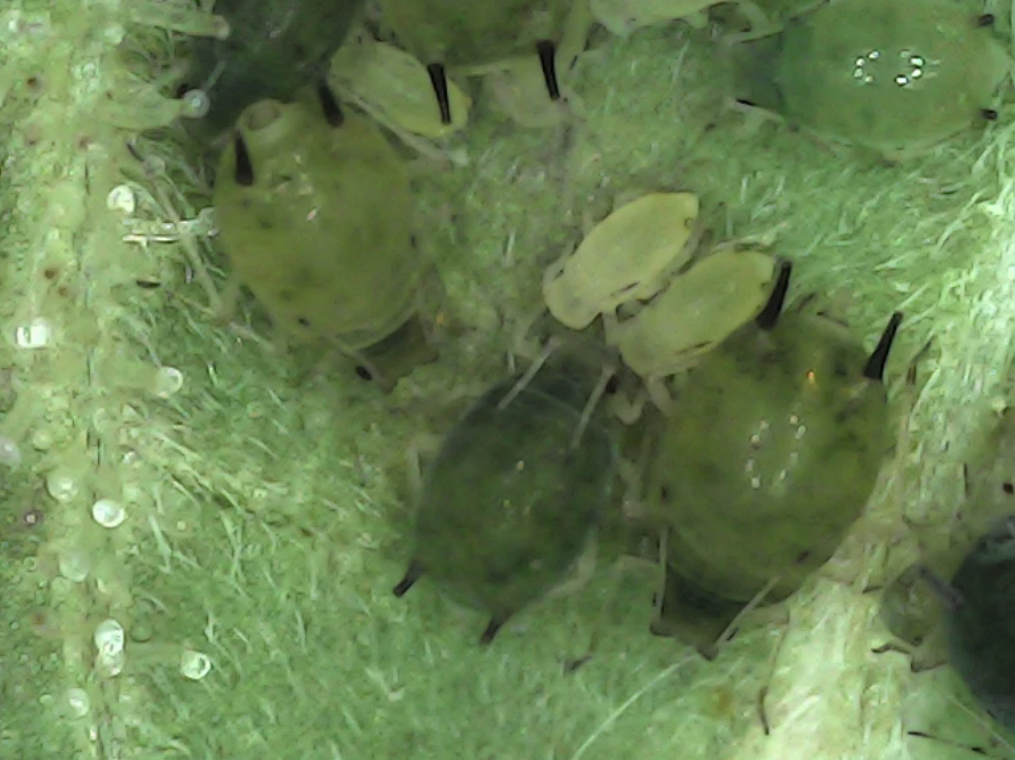
How To Prevent Aphids
When it comes to growing cannabis, it is better to be safe than sorry. Try to be proactive and take precautionary measures to keep these pests from getting into your grow room. Here is a preventative measures checklist that you can follow:
- Use air filtration or mesh to keep these pesky critters out of your grow room.
- Monitor your plants daily to ensure that no threat is lingering and going unnoticed
- Shake your pot to spot aphids as they may fall off and become easy to see
- Check on the underside of the leaves and around buds to spot any colonies or adult aphids
- Use yellow sticky traps in your grow room; the chances of a winged aphid getting caught by these traps are low – but not zero.
Aphids Treatments
If you have spotted an aphid colony making a home out of your precious cannabis plant, stay calm and use one of these treatments to control and get rid of the insects. There are many options to choose from so pick one that you prefer.
Parasitoids
Introducing predatory insects that kill and prey on the aphids is a good and biological way to get the situation in control. This can also be used as a preventative measure. Asian lady beetle and few other species of lady beetles, green lacewings, and hoverflies will make a good army in your war against aphids. Besides that, parasitic wasps that use an aphid’s body as a host for their young can also be used to kill them off.
Make the Conditions Unfeasible
Another biological control method is to get some fans running in the grow room to make it difficult for the aphids to hang onto the plant. Use a vacuum cleaner to suck up any aphids that may fall off. Aphids like warm temperature but a temperature of around 86°F/30°C will make it unfeasible for the aphids to live in the grow room. You can also increase carbon dioxide in the room to kill aphids.
Oils
There are many oils that you can spray on your cannabis plants to get rid of aphids. Neem oil is famous for treating numerous garden pests. You can also choose from cinnamon oil, eucalyptus oil, peppermint oil, cotton-seed oil, and coriander oil. If the oil is strongly scented, keep it away from the buds.
Homemade Solutions
Some growers use homemade solutions to treat their cannabis plants for aphids. Check your pantry for the items and make one of these solutions:
- Take some Epsom salt and mix it in water to make a solution to spray
- Chop some garlic and blend it into two cups of water. Strain the solution and spray it on the plant. Some people add garlic, black pepper, or onions in the solution for stronger effects.
- Take some tomato leaves and soak them into two cups of water overnight. Strain the water, add two cups of tap water, and spray the affected cannabis plant.
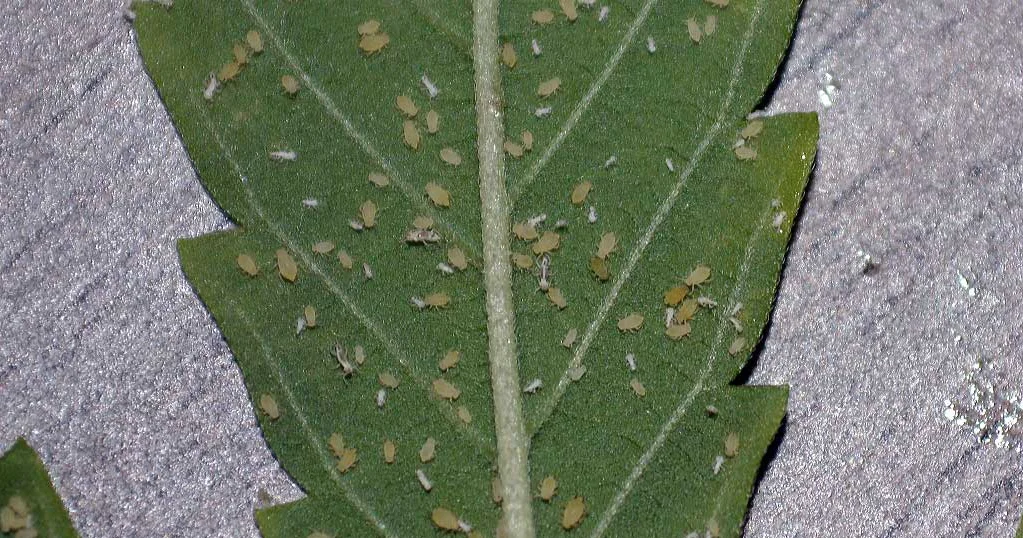
Chemical-Free Insecticides
Luckily, there are organic insecticides available on the market that can be used safely on cannabis plants. One of them is Essentria IC3 which is basically a solution of horticultural oils. Use it regularly and follow the instructions for best results.
Besides IC3, you can use Spinosad to spray your plants. This helps get rid of many pests without harming your plant. A perk of using Spinosad is that it does not affect other beneficial insects. Besides these two organic and renowned solutions, you can also make use of insecticidal soaps.
Chemical Pesticides
Even though it should be your last resort, you can use chemical pesticides that are readily available on the market. Although, it is not recommended to use them during the flowering stage.
With these preventative measures and tested treatments, you can set your cannabis plant on the path to recovery in no time. Give your cannabis plant some love and see it thrive. Have you encountered aphids before? What do you usually use to battle them? Let us know in the comment section below.
Sources:
- https://percysgrowroom.com/how-to-kill-aphids-on-a-cannabis-plant/
- https://www.edrosenthal.com/the-guru-of-ganja-blog/aphids-what-you-want-to-know-about-them-and-how-to-organically-get-rid-of-an-aphid-infestation-in-your-cannabis
- https://www.ilovegrowingmarijuana.com/marijuana-pests-aphids/
- https://www.growweedeasy.com/cannabis-plant-problems/aphids
![]()

